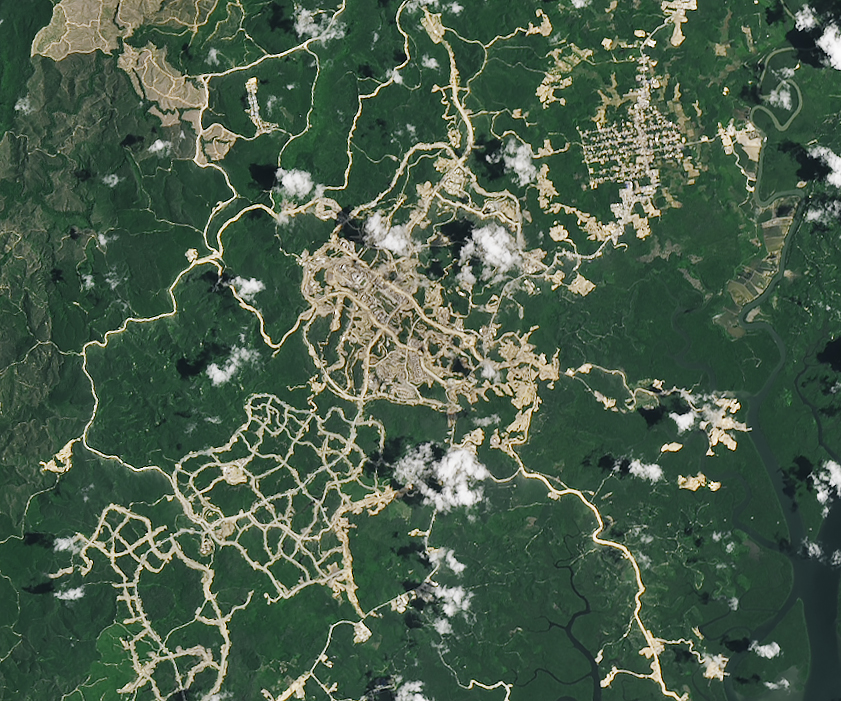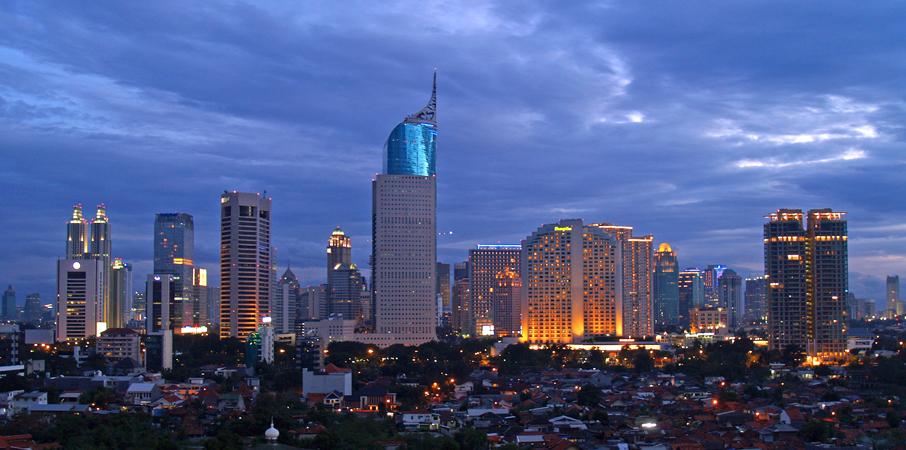
NASA recently released striking images showcasing the emergence of Indonesia’s new jungle city on Borneo. These satellite shots, taken in April 2022 and February 2024, reveal significant developments in eastern Kalimantan.
However, the images clearly display the construction of new roads and buildings, marking the progress of Nusantara, Indonesia’s future capital.
On February 23rd, NASA’s Earth Observatory revealed these images captured by the Operational Land Imager 2 (OLI-2) on the Landsat 9 satellite and the OLI on Landsat 8. They were featured as part of NASA’s Image of the Day series.
These visuals underscore the strides made by outgoing President Joko Widodo in his bold endeavor to relocate Indonesia’s capital. Additionally, they shed light on the environmental consequences of the construction of the new city in Borneo.
Jakarta sinking below sea level

One major reason behind the capital’s relocation is Jakarta’s potential sinking. Jakarta, Indonesia’s present capital, situated on the island of Java, is gradually sinking below sea level.
A study published in the journal Natural Hazards in 2011 revealed that Jakarta’s subsidence rate ranged between 0.4 and 6 inches (1 and 15 centimeters) annually, with certain areas sinking up to 11 inches (28 cm) per year.
This consistent decline, coupled with the impact of rising sea levels induced by climate change, poses a significant threat to the city’s future.
🌳Nusantara: Indonesia's new green capital! Satellite images captured the incredible transformation 🛰️
🏞️ 75% forest preservation, walkable spaces, and renewable energy! This city is taking shape to combat Jakarta's environmental woes.#environment #GoGreen #satellite pic.twitter.com/NfEFjf7GoC
— OrbitalToday.com (@SpaceBiz1) February 27, 2024
Heri Andreas, a researcher at the Bandung Institute of Technology in Indonesia who co-authored the study on Jakarta’s land subsidence, said that parts of the city could be underwater by 2050.
Additionally, Andreas emphasized the gravity of this issue by highlighting that the potential for Jakarta to be submerge isn’t a laughing matter. If we look at our models, by 2050, about 95 percent of North Jakarta will be submerged.
Jakarta’s sinking caused by groundwater extraction
Evidence suggests the sinking in Jakarta stems from excessive extraction of groundwater. Jakarta heavily depends on groundwater sourced from underground aquifers. As the groundwater level decreases, it triggers the sinking of the land above, as outlined in the study.
Additionally, Jakarta faces many challenges, including dense population, overcrowding, traffic congestion, hazardous air pollution, and drinking water shortages, as reported by NASA.
Moreover, President Widodo envisions Indonesia’s new capital on Borneo to be fundamentally distinct from Jakarta, aiming to address the critical issues.
Nusantara’s website affirms its commitment to becoming a sustainable city fueled by renewable energy. It also outlines plans for residential and commercial buildings to be erected using stringent, environmentally-friendly construction techniques.
Borneo, the third-largest non-continental island globally, is considerably less densely populated compared to Java. The island is divided among Indonesia, Malaysia, and Brunei, with Kalimantan constituting the majority of Indonesia’s territory.
Kalimantan offers ample space to establish a new, contemporary metropolis from the ground up. However, it’s crucial to note the island’s abundant natural habitats, according to Live Science.
See all the latest news from Greece and the world at Greekreporter.com. Contact our newsroom to report an update or send your story, photos and videos. Follow GR on Google News and subscribe here to our daily email!



